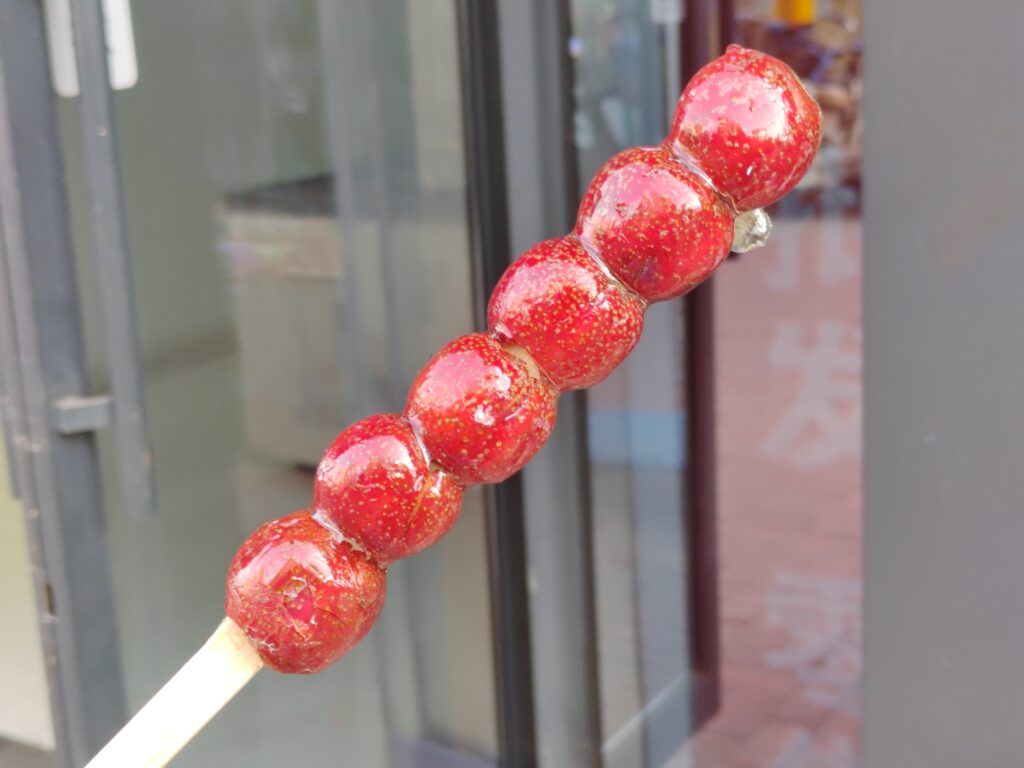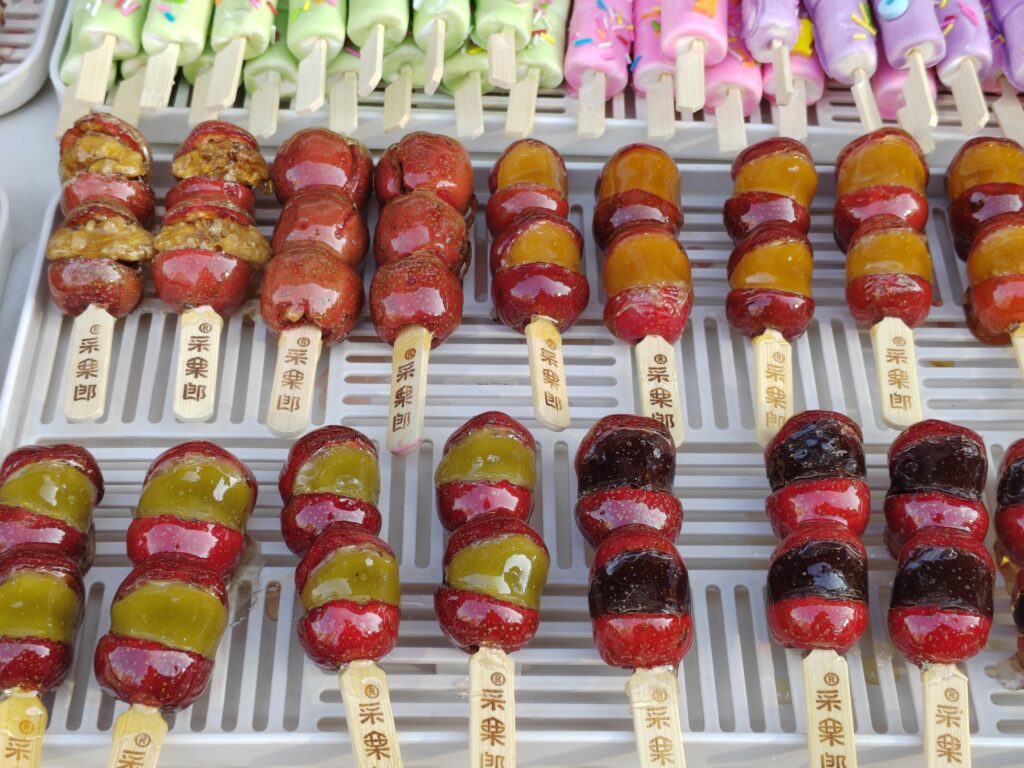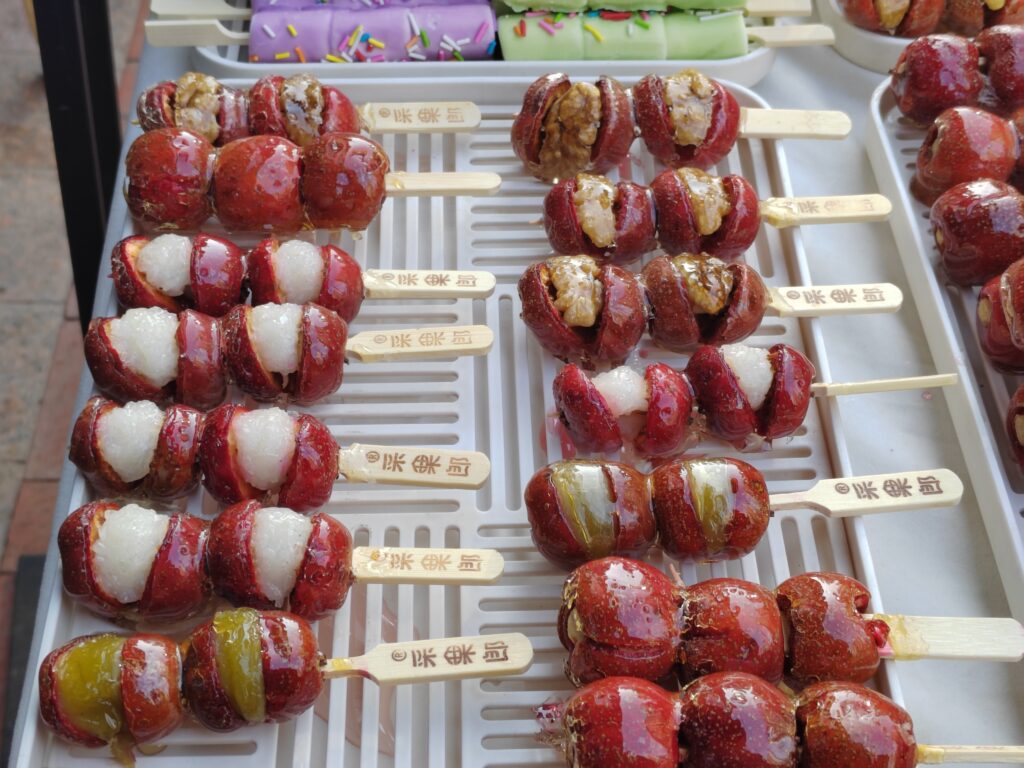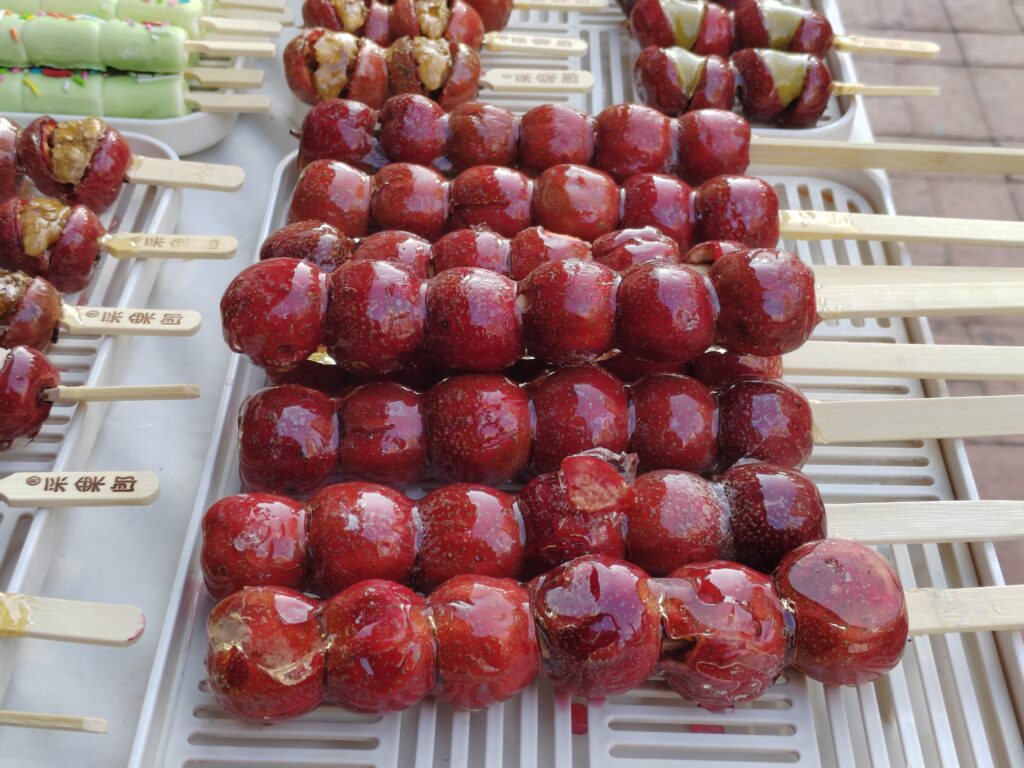Winter is almost over, and soon the sale of tanghulu, one of my favorite winter delicacies, will come to an end. Today, let’s talk about the irresistible “Tanghulu” AKA “Bingtanghulu”—the treat that makes your mouth water just by hearing its name! In China, there’s a classic children’s song called Ice Tanghulu that goes:

“Sweet, sweet Tanghulu (冰糖葫芦甜又甜),
Red hawthorn, round and round(红红山楂圆又圆),
Row by row, string by string(一排排,一串串),
Taste it, blink your eyes(尝一尝,眨一眼),
No need to speak, just nod your head(不用说话先点头),
Do you like it or not…(你说喜欢不喜欢)”
Every time I hum this song, I’m reminded of that sunny afternoon when my grandpa picked me up from school and bought me a sparkling Tanghulu from a street vendor at the school gate. In that moment, I felt like I had the whole world. The sweetness and happiness of that memory still linger, and I miss my grandpa dearly.
Tanghulu: A Pronunciation Tip for Foreign Friends
For foreign friends, the name “Tanghulu” might be a bit tricky to pronounce. Don’t worry, here’s a little tip! The “Tang” part sounds like the word “tangy” (which means sour) in English, but in this case, it represents the sweetness of sugar, while “hulu” refers to a gourd in Chinese—so that’s the thing you see.
Or, you can always call it “Chinese candy skewer,” even though it’s a bit long, it gets the point across!
Tanghulu’s Variety: Tradition Meets Innovation
The traditional Tanghulu is most commonly made with hawthorn berries, which are coated with a glossy sugar glaze. It’s tangy and sweet, irresistible to the taste buds.

There’s also a variation where the hawthorn berries are mashed into a flatter shape. Besides hawthorn, Tanghulu can also be made with apples, oranges, grapes, dried black dates, kiwi, and more. Really, if you like it, anything can become a Tanghulu! These traditional versions are not only rich in flavor but also colorful and eye-catching.

Of course, there are also some “unconventional” versions of Tanghulu that might surprise you—like spicy snack Tanghulu, cotton candy Tanghulu, chocolate Tanghulu, veggie Tanghulu, spicy hotpot Tanghulu,, rice cake Tanghulu and even chicken foot Tanghulu! They look interesting and also can be daunting , but I’m not brave enough to try the chicken feet tanghulu for example, haha.
Why Does Tanghulu Taste Better in the North?
When it comes to the best place to enjoy Tanghulu in China, the North is the winner! Why? Because the cold, dry winters in northern China allow the sugar coating on Tanghulu to harden faster, making it crispier. The climate also makes fruits like hawthorn more tart and sweet, which contrasts beautifully with the sugary coating. So, Tanghulu in the North offers the “authentic taste” that’s hard to beat!

From personal experience, even though I grew up eating Tanghulu in central China, the first time I tried Tanghulu in Northeast China during my college years, I was blown away by the crunchiness and the stronger sweet-sour contrast. It really does taste better in the colder weather!
Many cities in northern China are famous for their Tanghulu. In Beijing, the capital, you’ll find a wide variety with different textures and flavors. It’s one of the must-try foods for visitors. Tianjin’s Tanghulu, known locally as “Tangdun’er,” is particularly crispy and not overly sweet. Places like Baoding and Tangshan in Hebei also offer unique local versions. Even in Harbin, a northern city in Northeast China, you’ll get a delightful Tanghulu experience that’ll leave you craving more.
More Than Just a Snack: A Cultural Tradition
In conclusion, Tanghulu is more than just a treat—it’s a cultural heritage and an emotional connection for many. Next time you visit northern China, don’t forget to try the Tanghulu here. I promise it’ll offer you an unforgettable taste experience and a deep dive into Chinese culture!


